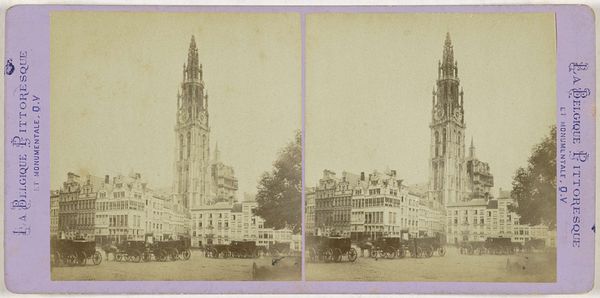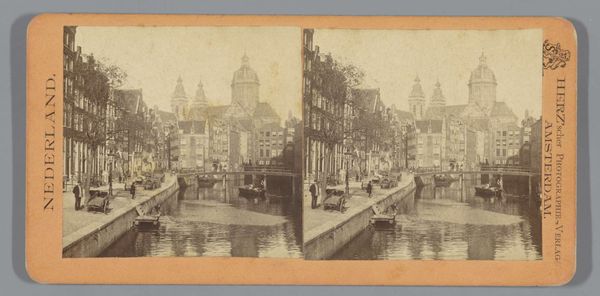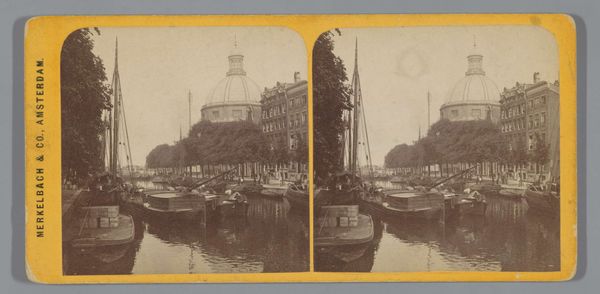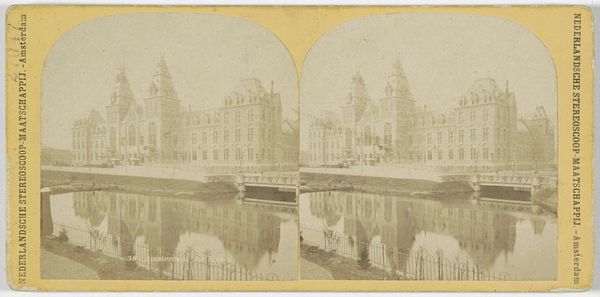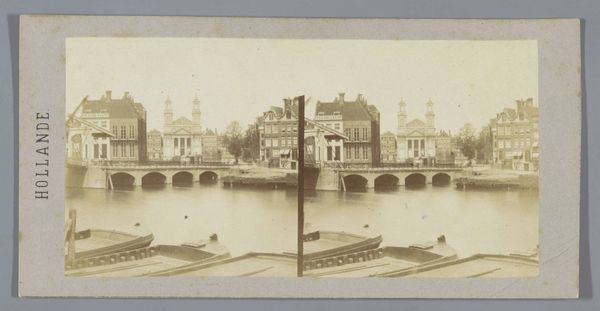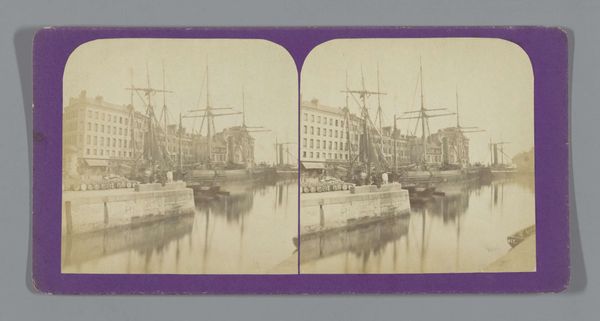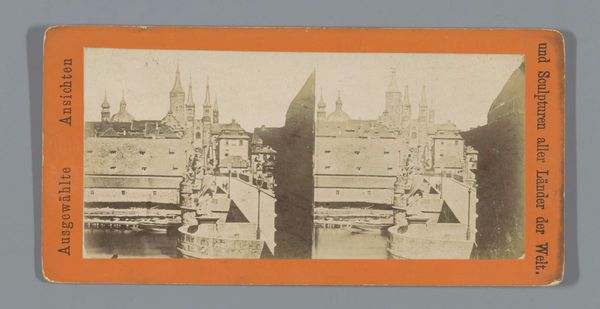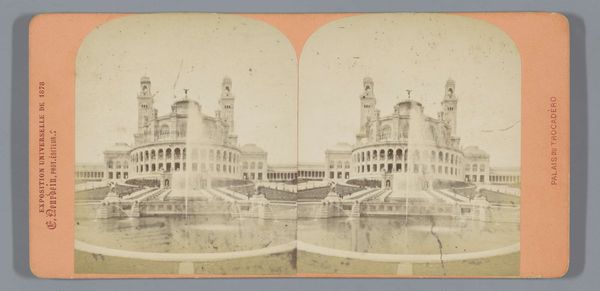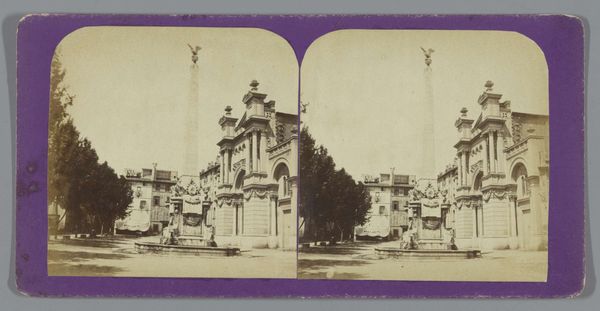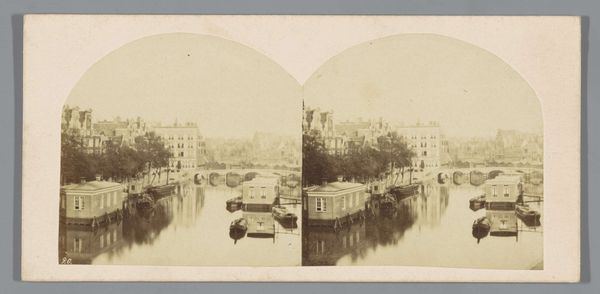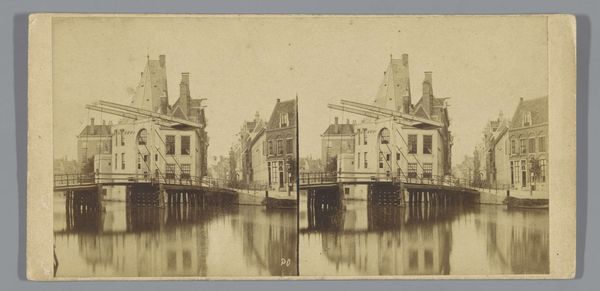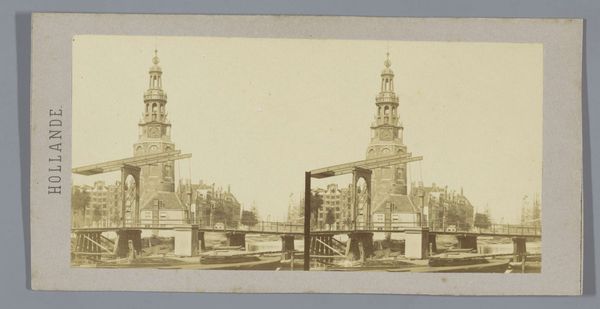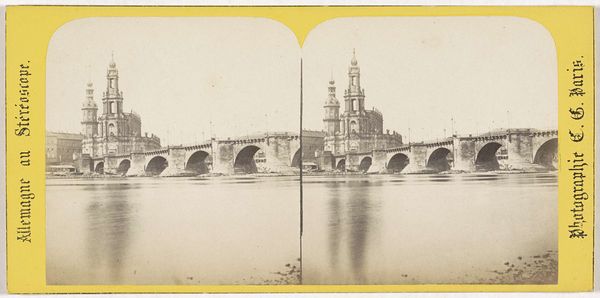
#
aged paper
#
print print-like
#
homemade paper
#
paper non-digital material
#
paperlike
#
paper texture
#
folded paper
#
watercolour bleed
#
paper medium
#
watercolor
Dimensions: height 87 mm, width 174 mm
Copyright: Rijks Museum: Open Domain
Editor: This is Pieter Oosterhuis's "Gezicht op de Montelbaanstoren in Amsterdam," likely created sometime between 1860 and 1885. It looks like a photograph, perhaps a stereoscopic image on aged paper. There's something sepia-toned and nostalgic about it. What can you tell me about its historical significance? Curator: Well, first it's key to remember the 19th century and the burgeoning culture surrounding photography. Photography democratized image production and circulation. Before photography, such a view would largely be reserved for paintings commissioned by wealthier patrons. What does the printing and circulation of images like this tell us about the changing status of cities? Editor: I guess that photography made Amsterdam's image more widely available. It's almost like a postcard today. People who couldn't visit could still experience the city. But why this specific view? Curator: Precisely. The Montelbaanstoren was already an established landmark with deep historical roots. Representing Amsterdam, or any city, always involves making specific choices about which landmarks to elevate. Can you think about what choices are being made about representing Amsterdam to those who could not travel there? What specific kind of story of Amsterdam is being told? Editor: So, it’s about more than just the building. It’s about curating an image, right? It also speaks to Dutch history with water management because of the bridge. What is most interesting to me, now, is the politics of representing an entire city through specific monuments! Curator: Yes, you got it! Next time, consider the point of view of people depicted, or excluded. Thanks, this was revealing for me, too!
Comments
No comments
Be the first to comment and join the conversation on the ultimate creative platform.
